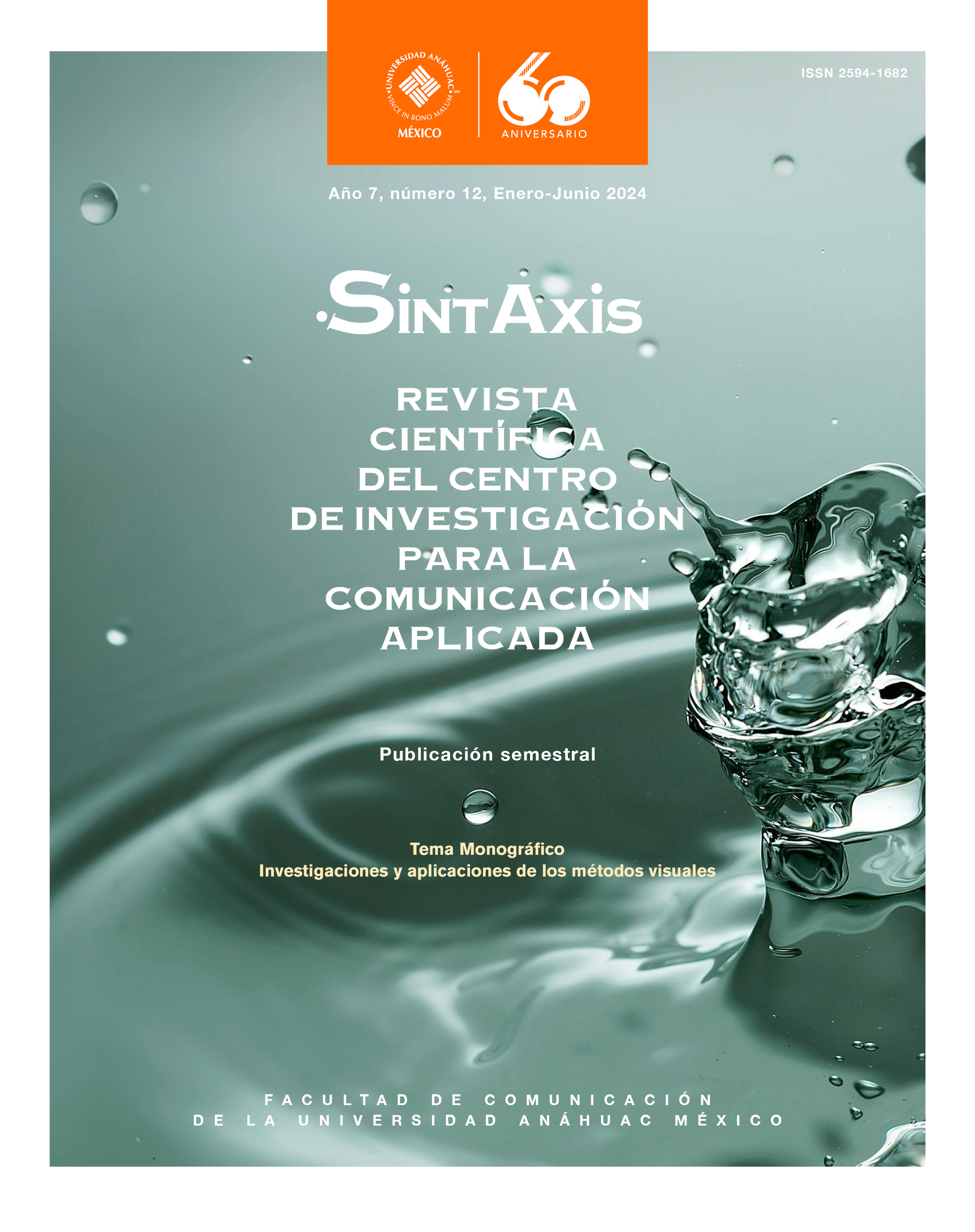Garder trace, rendre compte d’une oeuvre d’art vivant transmédiatique: une approche diégétique des dispositifs de prélèvement et de médiation
DOI :
https://doi.org/10.36105/stx.2024n12.07Mots-clés :
virtual reality, emotion, video capture, experience, visual methodsRésumé
The specificity of Virtual Reality is that it offers the user almost complete sound and visual immersion, relying heavily on the sensation of presence, activated by audio and visual indications of the simulated space and strongly linked to the emotional dimension of the virtual reality experience. From the point of view of experience design research, since the user is immersed in a virtual world, real-time feedback on his or her experience is more difficult than for other media. The aim of this article is to present a visual qualitative approach to collecting traces of a virtual reality user's lived experience using a visual method protocol involving synchronous virtual real-world video recordings and the Spot Your Mood tool (Yvart, Delestage, Leleu-Merviel, 2016).Téléchargements
Références
Anderson, E. W., Sullivan, M. W. (1993). The Antecedents and Consequences of Customer Satisfaction for Firms. Marketing Science, 12(2), 125143. https://doi.org/10.1287/mksc.12.2.125 DOI: https://doi.org/10.1287/mksc.12.2.125
Bhattacherjee, A. (2001). Understanding Information Systems Continuance : An Expectation-Confirmation Model. MIS Quarterly, 25(3), 351. https://doi.org/10.2307/3250921 DOI: https://doi.org/10.2307/3250921
Delestage, C.-A. (2018). L’expérience émotionnelle ou la performance des programmes de télévision. L’horizon de pertinence comme déterminant de la construction de sens par le spectateur. Sciences de l’information et de la communication. Université de Valenciennes et du Hainaut-Cambrésis.
Diemer, J., Alpers, G. W., Peperkorn, H. M., Shiban, Y., Mühlberger, A. (2015). The impact ofperception and presence on emotional reactions : A review of research in virtual reality. Frontiers in Psychology, 6. https://doi.org/10.3389/fpsyg.2015.00026 DOI: https://doi.org/10.3389/fpsyg.2015.00026
Ducheneaut, N., Yee, N. (2012). Les jeux vidéo en ligne, un miroir de la personnalité des internautes? Questions de communication, 21, 21. https://doi.org/10.4000/questionsdecommunication.6571 DOI: https://doi.org/10.4000/questionsdecommunication.6571
Huang, M., Alessi, N. (1999). Presence as an emotional experience. American Psychological Association. https://doi.org/10.1037/e705302011-011 DOI: https://doi.org/10.1037/e705302011-011
Iskander, J., Hossny, M., Nahavandi, S. (2018). A Review on Ocular Biomechanic Models for Assessing Visual Fatigue in Virtual Reality. IEEE Access, 6, 1934519361. https://doi.org/10.1109/ACCESS.2018.2815663 DOI: https://doi.org/10.1109/ACCESS.2018.2815663
Kim, K. (2016). Is Virtual Reality (VR) Becoming an Effective Application for the Market Opportunity in Health Care, Manufacturing, and Entertainment Industry? European Scientific Journal, ESJ, 12(9), 14. https://doi.org/10.19044/esj.2016.v12n9p14 DOI: https://doi.org/10.19044/esj.2016.v12n9p14
Laurell, C., Sandström, C., Berthold, A., Larsson, D. (2019). Exploring barriers to adoption of Virtual Reality through Social Media Analytics and Machine Learning – An assessmentof technology, network, price and trialability. Journal of Business Research, 100,469474. https://doi.org/10.1016/j.jbusres.2019.01.017 DOI: https://doi.org/10.1016/j.jbusres.2019.01.017
Lee, H., Jung, T. H., tom Dieck, M. C., Chung, N. (2020). Experiencing immersive virtual reality in museums. Information, Management, 57(5), 103229. https://doi.org/10.1016/j.im.2019.103229 DOI: https://doi.org/10.1016/j.im.2019.103229
Macintosh, B. R., Rassier, D. E. (2002). What Is Fatigue? Canadian Journal of Applied Physiology, 27(1), 4255. https://doi.org/10.1139/h02-003 DOI: https://doi.org/10.1139/h02-003
Nahon, D. (2020). Les technologies immersives : État de l’art, enjeux, opportunités et perspectives. Paris: SITEM 2020.
Puig, A., Rodríguez, I., Arcos, J. Ll., Rodríguez-Aguilar, J. A., Cebrián, S., Bogdanovych, A., Morera, N., Palomo, A., Piqué, R. (2020). Lessons learned from supplementing archaeological museum exhibitions with virtual reality. Virtual Reality, 24(2), 343358. https://doi.org/10.1007/s10055-019-00391-z DOI: https://doi.org/10.1007/s10055-019-00391-z
Riva, G. (2005). Virtual Reality in Psychotherapy : Review. CyberPsychology, Behavior, 8(3), 220230. https://doi.org/10.1089/cpb.2005.8.220 DOI: https://doi.org/10.1089/cpb.2005.8.220
Russell, J. A. (1980). A circumplex model of affect. Journal of Personality and Social Psychology, 39(6), 11611178. https://doi.org/10.1037/h0077714 DOI: https://doi.org/10.1037/h0077714
Schmitt, D. (2012). Expérience de visite et construction des connaissances : Le cas des musées desciences et des centres de culture scientifique. Sciences de l’information et de la communication, Université de Strasbourg. https://theses.hal.science/tel00802163
Sherman, W. R., Craig, A. B. (2019). Understanding virtual reality : Interface, application, and design. Morgan Kaufmann. https://doi.org/10.1016/C2013-0-18583-2 DOI: https://doi.org/10.1016/C2013-0-18583-2
Statista. (2023). Volume of the VR headsets market worldwide from 2018 to 2028. Statista. https://www.statista.com/forecasts/1331896/vr-headset-sales-volume-worldwide
Thayer, R. E. (1989). The Biopsychology of Mood and Arousal. USA: Oxford University Press. DOI: https://doi.org/10.1093/oso/9780195068276.001.0001
Wessely, S. (1999). Chronic Fatigue Syndrome. In Y. Ono, A. Janca, M. Asai, N. Sartorius (Éds.), Somatoform Disorders. Springer Japan. https://doi.org/10.1007/978-4-431-68500-5_10 DOI: https://doi.org/10.1007/978-4-431-68500-5_10
Yang, H., Han, S. (2020). Understanding virtual reality continuance : An extended perspective of perceived value. Online Information Review, ahead-of-print(ahead-of-print). https://doi.org/10.1108/OIR-02-2020-0058 DOI: https://doi.org/10.1108/OIR-02-2020-0058
Yvart, W. (2019). Qualification (a)verbale de l’humeur musicale : Nouvelles perspectives pour la synchronisation dans l’audiovisuel [Phdthesis, UPHF ; UMons]. https://web.umons.ac.be/fpms/fr/evenements/qualification-averbale-de-lhumeur-musicale-nouvelles-perspectives-pour-la-synchronisation-dans-laudiovisuel-par-monsieur-willy-yvart/
Yvart, W., Bougenies, F., Delestage, C.-A. (2021). Traces de ressentis en cours d’expérience: Méthodes et outils. In H. Boulekbache Mazouz, B. Galinon-Melenec, S. Leleu-Merviel (Éds.), La trace, du sensible au social. CNRS Editions, 5, 125173.
Yvart, W., Delestage, C.-A., Leleu-Merviel, S. (2016). SYM: Toward a New Tool in User’s Mood Determination. Proceedings of EmoVis 2016, ACM IUI 2016 Workshop on Emotion and Visualization, Sonoma, CA, USA, March 10, 2016, 2328. https://doi.org/10.48550/arXiv.1902.02996 DOI: https://doi.org/10.3384/ecp10304

Téléchargements
Publiée
Numéro
Rubrique
Licence
(c) Copyright Charles-Alexandre Delestage, Willy Yvart 2024

Ce travail est disponible sous licence Creative Commons Attribution - Pas d'Utilisation Commerciale - Pas de Modification 4.0 International.
Sintaxis. Revista científica del Centro de Investigación para la Comunicación Aplicada© se distribuye bajo una Licencia Creative Commons Atribución-NoComercial-SinDerivadas 4.0 Internacional.
El autor conserva los derechos patrimoniales sin restricciones y garantiza a la revista el derecho de ser la primera publicación del trabajo. El autor es libre de publicar en cualquier otro medio su artículo, como un repositorio institucional.

















